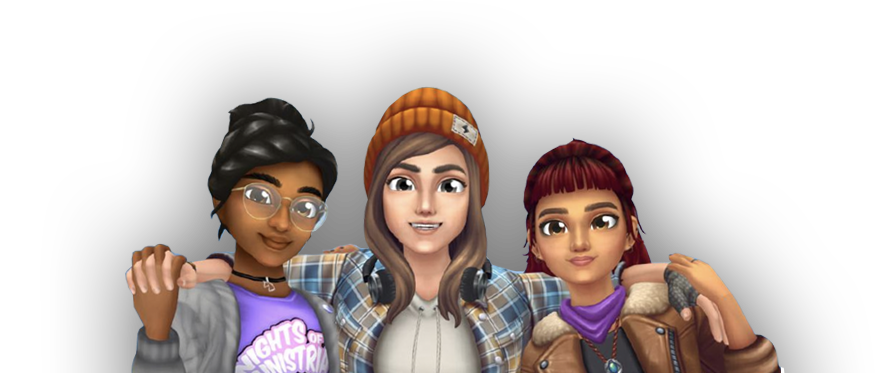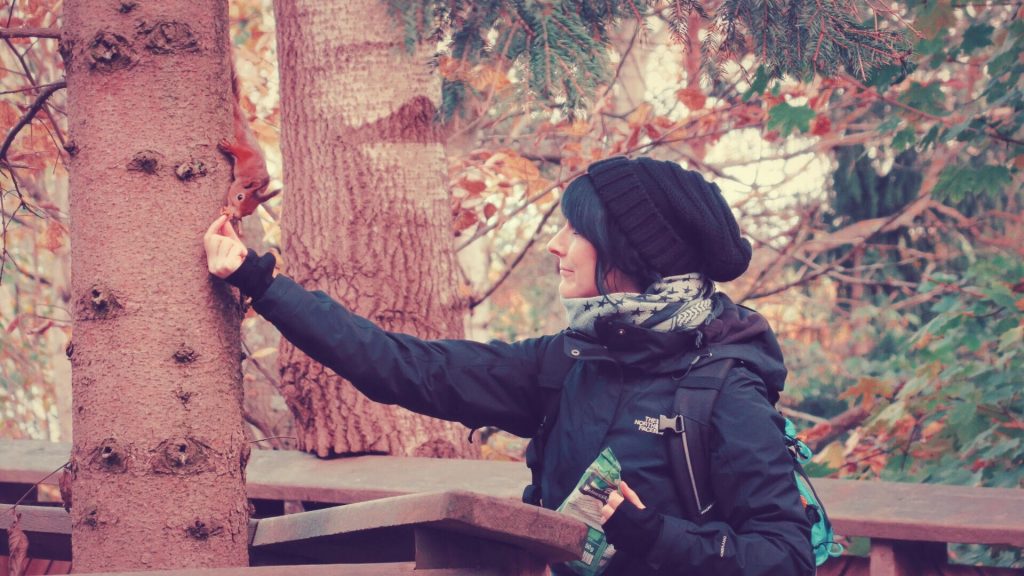
Interview with Marie Beschorner
Meet the talented Marie, the illustrator of the Soul Riders books, loading screens, and other art at Star Stable!
Tell us about yourself Marie!
I’m a full-time freelance illustrator working partly from a small town in North Rhine Westphalia in Germany as well as from Stockholm, Sweden. I love to travel, to see different things and places – therefore I enjoy the change of locations a lot. It’s nice to have a job which you can do wherever you go. At the moment I am stuck in Germany due to the current situation and I really miss the change of scenery.
How long have you been an illustrator? When and how did your love for art begin?
I have an academic background in art and started out as a traditional artist, mainly painting with oil and acrylic. I discovered the digital medium much later, after I had finished my studies. But as soon as I laid hands on my first Wacom tablet I immediately fell in love with it. Painting this way felt like one of the most intuitive things I ever did. My love for digital art was the reason for becoming an illustrator in the first place. I kicked off my freelance career more than 7 years ago. Before that I worked in a creative agency and taught art at the university.
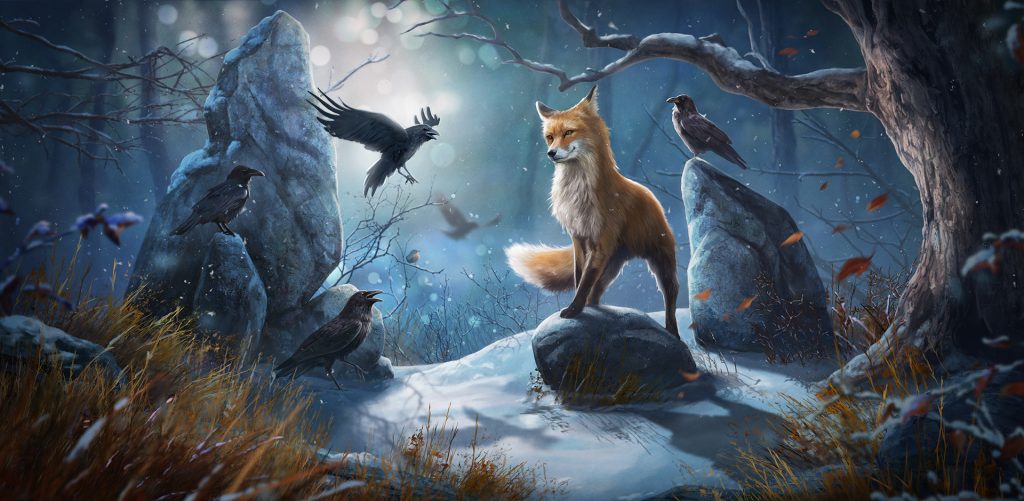
My love for art in general reaches back much further. I started drawing as a kid. My parents kept large boxes with hundreds of paintings and drawings and it’s really fun to dive deep into them and see what subjects interested me back then – one recurring topic for example that I remember quite vividly is Pippi Longstocking lifting her horse over her head. I really loved Pippi. And there are lots and lots of animals. Ever since, art has been an important part of my life. Though sometimes I got a bit detached from my own art and felt more interested in art theory and the works of other artists. I love visiting art galleries and exhibitions and enjoy losing myself in the artworks of others just as much as creating my own art.
Do you have any advice for anyone who wants to get into this career?
I believe that the most important trait you absolutely need to have as an illustrator is a purpose and a passion for what you do. There is so much talent out there, so many outstanding illustrators and concept artists and in order to compete I feel that it’s important to find your own voice, your own subjects and style. Clients want to see original art, something they can relate to, but which is fresh and unique. In the beginning it might be a good idea to study your heroes and learn from artists that inspire you. But always try to figure out where your personality and your interests fit in. Some people manage to be successful by copying or iterating on what’s in vogue at a specific point in time – but I think the key for long term success is trying to figure out what makes your art unique.
I kicked off my career with a passion for wolves and nature – ‘Company of Wolves’ is the name I chose for my business and it says it all. Maybe the Star Stable audience knows me more for horse related art but if you have a look at my portfolio, you’ll see that all my art shares a deep love for nature and animals, especially for wolves. That doesn’t mean that you have to stick to one specific subject or one specific style – but it can help you to find your own unique voice and to set your art apart from others.
You should also be aware that if you want to succeed in this industry you have to be willing to work hard for it.
Nothing gets handed to you, you have to claim it yourself by getting your name out there and showing people what you can do.
Marie Beschorner

Do you only draw digital?
Yes, that’s right. I haven’t touched pen and paper for years now. As I mentioned before, I originally started out as a traditional painter working with oil and acrylic. But to be honest: it never filled me with as much joy as digital painting does. I always disliked the process of analogue art: the messiness of mixing the colors, the smell of turpentine which – once you started painting – is everywhere: in your hair, in your clothes, in the house; the long wait for the paint to dry, the painful realization that whatever you did two hours ago looked way better than what you are doing now, with no way to go back to an older version. I love it that digital art has none of these issues – but I am also aware that many artists treasure traditional painting for exactly those reasons and define them as valuable assets rather than annoyances. It’s a matter of preference, I guess.
Where do you find inspiration?
I find a lot of inspiration in nature. I enjoy long walks and travelling and quite often I come back with new ideas about what I want to paint. I especially like to observe nature – weather conditions, the play of light and shadow, seasonal changes and moods connected to these things. When I am travelling I cherish the change in scenery as well as the exploration of culture and folklore.
I also love studying and admiring the art of other artists. If there is a computer game or movie I like, I always get the corresponding ‘The Art of’ book, which gives you an insight into the artistic process. I have quite a large collection which ranges from Disney/Pixar and Dreamworks animations to games such as ‘Tomb Raider’ ‘The Last of us’ and ‘Horizon Zero Dawn’, to name just a few. I also absolutely adore Studio Ghibli as well as art by Makoto Shinkai. There are also many traditional artists that have influenced me: Caravaggio – the master of shadow and light, Edward Burne-Jones and J.W. Waterhouse amongst other Pre-Raphaelites or Alphonse Mucha are some I want to mention. Last but not least I enjoy browsing the internet. I check out the latest works on Behance or browse for the latest art of my favorite concept artists and illustrators.
What software do you use?
I use Photoshop CC and a Wacom Intuos Pro, and I occasionally sketch in Procreate on the iPad.
Do you have some kind of process?
In my experience people who are playing with the idea of becoming a professional illustrator are mostly interested in the process of creating a typical piece of art for a client. So I will describe the nitty-gritty details for you: Usually we set up a Skype meeting (or a meeting in person) in which the client and I discuss the project. The client explains what is needed in detail and I ask questions if I feel that things are not clear enough. During this step it’s important that I get a good idea about the background for the artwork that I will create. What is the context and the backstory? Who is the target audience? What is the general purpose of the artwork? Which basic requirements have to be met (size, resolution, color profiles, file format, deadline, etc.)? What is the desired mood and look of the artwork? We might also look at reference images or compile mood boards in order to get a clearer vision of the visuals.
Sometimes I also do some research on the subject matter to immerse myself deeper into the topic or do extensive studies (especially if I am dealing with a subject for the first time and therefore am not familiar with specific aspects of it (i.e. anatomy, architecture, textures etc.). If I work on my own projects my approach is similar, however, my personal art emphasizes the mood and story more than caring about target audiences and purposes – I simply do what I feel like doing.
If not already done, the paperwork has to be fixed and finalized after the meeting (NDAs, artist agreement, licensing agreement, etc.). If not provided by the client, I prepare an artist agreement in which I specify the task and requirements for the artwork along with the general terms and conditions. Before setting up the meeting I usually write an estimate (based on a first briefing), which I now will adjust if necessary and charge 50% up front.
When all formalities are in order the real work can begin. First, I doodle around a bit and figure out a composition and color scheme (I rarely do any pencil sketches but start directly with the color, which I block in roughly and then start to define more and more details in the process. Sometimes I do a combination of a painted draft and a matte painting (this is more common in game related projects because the client often provides in-game assets which I can use in my art). If mood boards were created, I use them as a close reference in order to get the desired look and feel. After I’ve settled on a good design, I complete a color sketch or mock-up which I will send to the client who can then request one round of revisions. After the (revised) sketch / mock-up has been approved I render the artwork. The client can request another round of minor revisions after this. When the client is satisfied I compile the files for delivery.
From sketch to final illustration
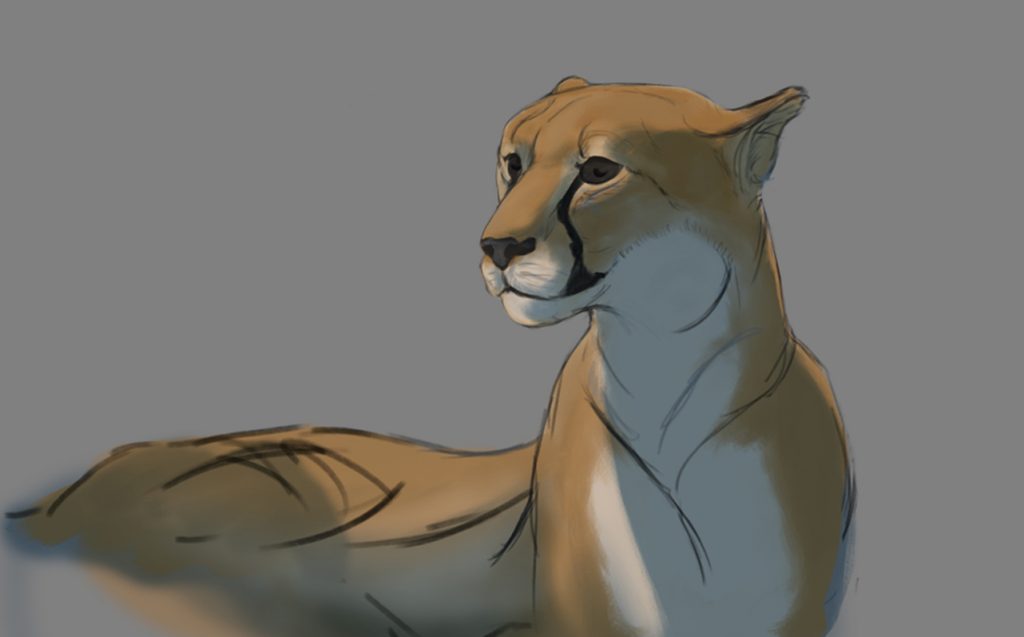
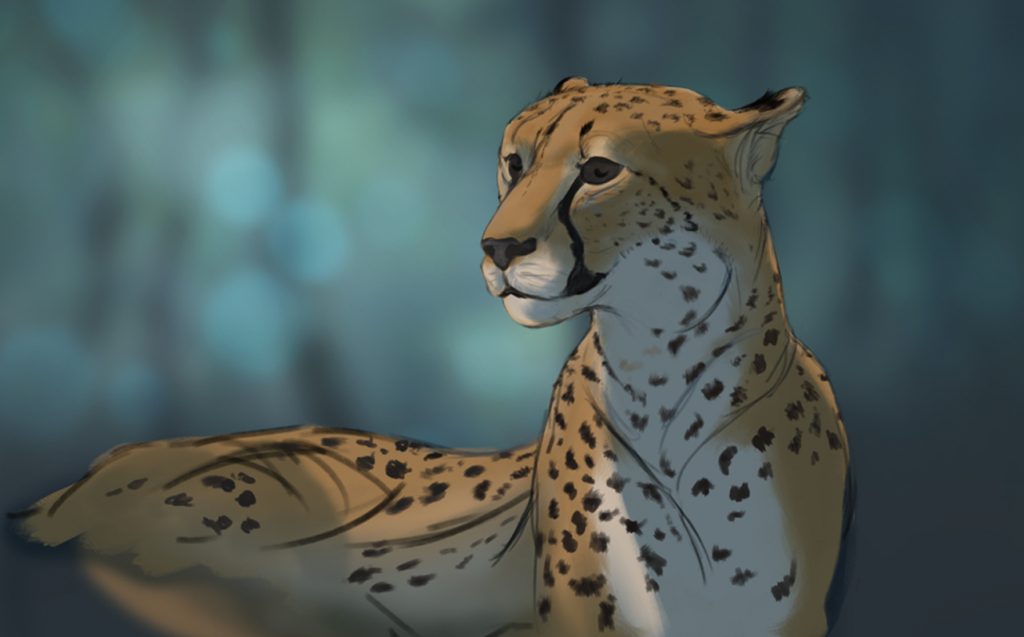
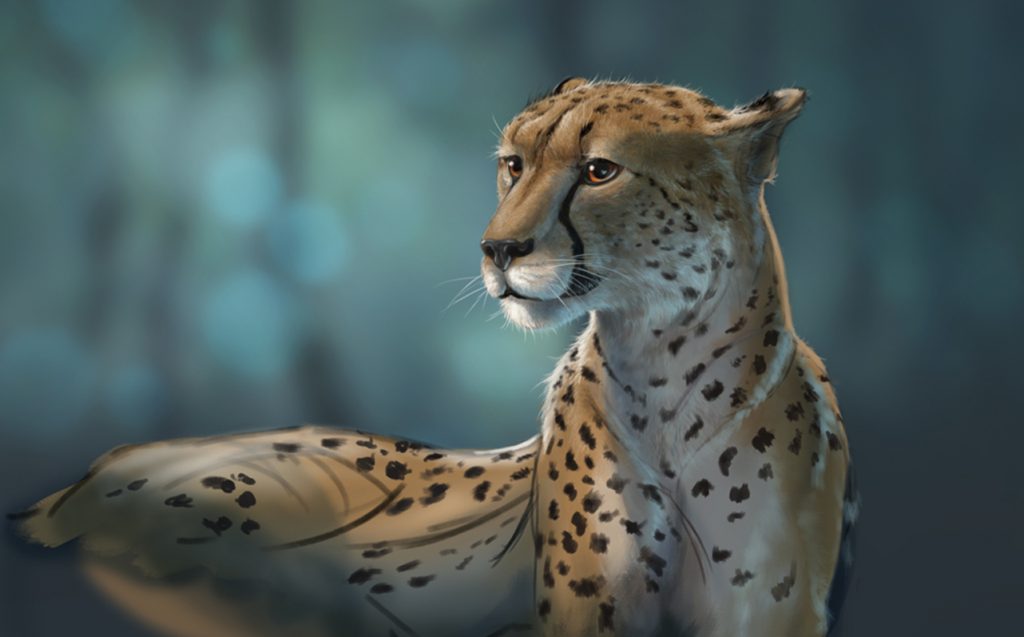
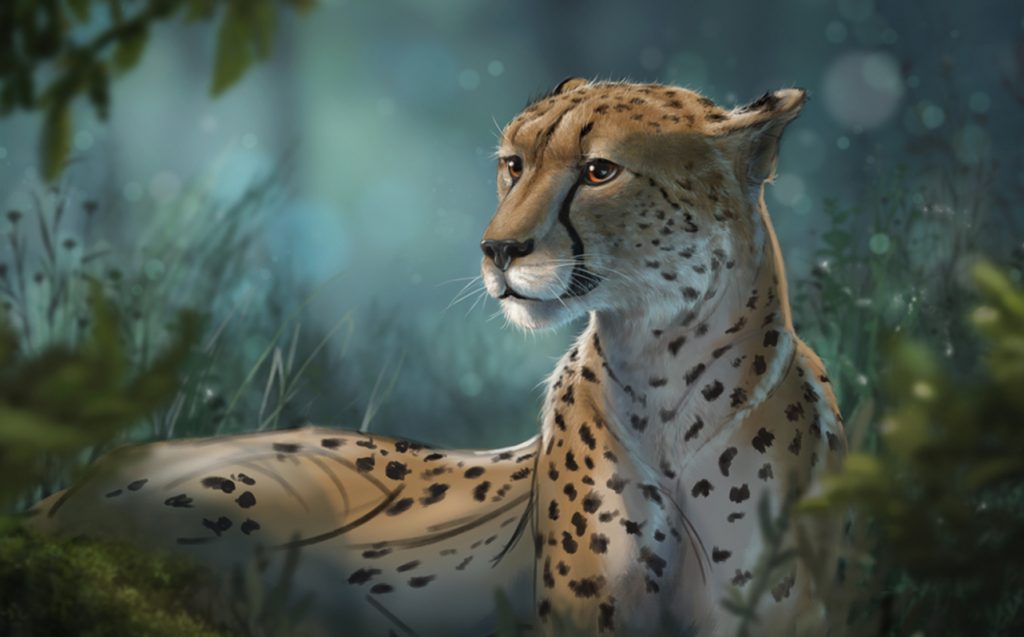
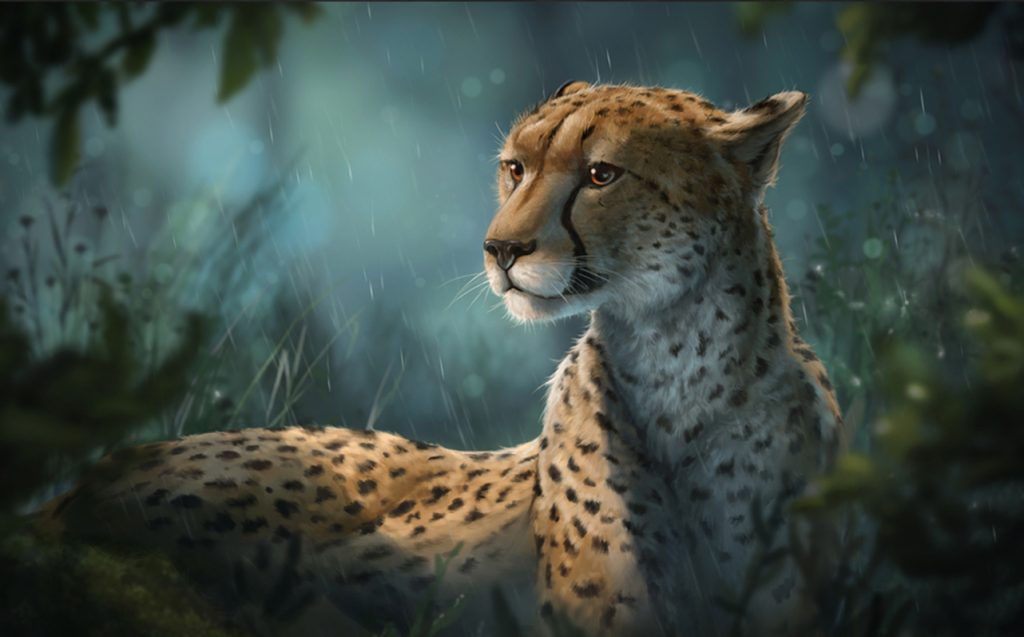
Do you have any advice or tips for becoming better at drawing?
I think that it’s helpful to focus on one aspect at a time – if you struggle with perspective don’t try to fix anatomy or light and color at the same time. I sometimes got very frustrated because I wanted to improve too many things too quickly. Art is a process and it’s impossible to get it all right all at once. It takes time and you have to allow yourself to be patient. So if you struggle with a specific aspect of art, find an artist who is particularly good at it. Study and copy that artists’ work whilst trying to keep the focus on the thing you want to improve. Then try to implement it into an original piece of art of your own.
If you feel stuck, take a break from it and revisit it at a later point in time – sometimes a few days or weeks can really help you to process new information and to get a fresh look on the work you created a while back. Sometimes you might realize right away why it didn’t work out the way you wanted. It’s also very helpful to find a mentor, who can provide valuable feedback – it might be tricky to find someone who is willing to help you on a regular basis but in my experience a lot of artists are very helpful and friendly if you approach them with a concrete question or problem. So it might be worth a try to ask someone for feedback, as long as you are mindful of people’s time.
Otherwise simply try to paint often – if you can, do it every day. It’s the same as doing sports or making music – the more you do it, the better you get and the more natural it will feel. Try to keep it fun but don’t forget to challenge yourself from time to time.
Want to learn more about Marie and her illustrations? Visit her website!

